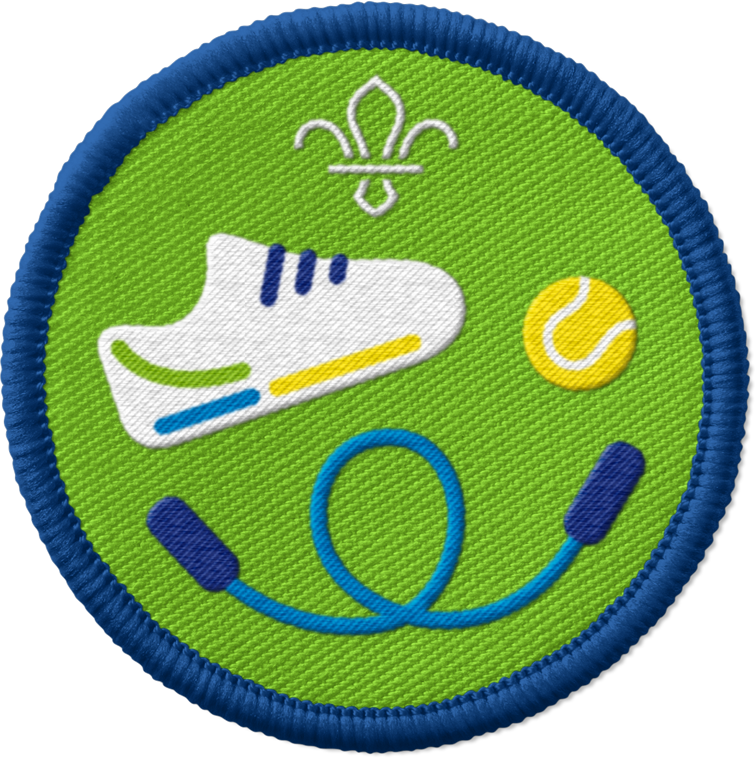
Play Hot Potato
You’ll need
- A soft foam ball or beanbag
- Something to play music with (optional)
- Hoop (optional)
Before you begin
- Use the safety checklist to help you plan and risk assess your activity. There's also more guidance to help you carry out your risk assessment, including examples. Don’t forget to make sure all young people and adults involved in the activity know how to take part safely.
- Make sure you’ll have enough helpers. You may need some parents and carers to help if you’re short on helpers.
To watch in full screen, double click the video
Setting up this game
- Make sure to have a music playlist prepared that’s appropriate for your age group and to have checked the music licencing policy, if you’re using music in this game.
Play the game
- Everyone should stand in a circle. Tell everyone you’re going to be playing a game called Hot Potato.
- An adult volunteer or young leader will need to start with a beanbag or soft ball.
- Explain that the object of the game is to pretend you’re passing a steaming hot potato in your hands, making sure to let go of it as quickly as possible, so you don’t get burnt.
- Standing in the circle, pass the beanbag or ball around the circle, while music plays in the background. If anyone drops the ball, they can pick it up and keep playing.
- When the music stops, the person holding the ‘hot potato’ is out. Keep going until there’s only one person left, who can be declared the winner!
- Instead of playing music and stopping it, everyone can sing a verse of a song together while you play, When the verse ends, the person holding the beanbag or ball is out. One rhyme that works well is: ‘One potato, two potato, three potato, four. Five potato, six potato, seven potato, more!’
- If the ball’s been dropped when the music or rhyme stops, the person who missed catching the ‘hot potato’ is out.
- If you want to make the game harder, people who drop the ball could also be out.
- If you want to make it even harder, everyone should put one hand behind their back and play one-handed, or everyone can stand on one leg to play.
- To make it difficult, you can also ask everyone to clasp their hands together and volley the ball, rather than throw and catch it.
- For another version of this game, tell everyone you want to make potato soup.
- Place a large hula hoop in the middle, with everyone sitting in a circle around it.
- Every time someone is out of the game, they become a potato that gets added to the pot of soup, so they must stand or sit in the hoop.
- Everyone will enjoy squeezing into the soup together when there are a few of them!
Reflection
This game was all about having fun, working as a team and thinking on your feet. You had to be aware of where the ball was and move as fast you could to pass it on. Did people enjoy having to play the game as quickly as they could? What was easy? What was hard work?
You had to keep looking out for the ball, being ready to catch and throw it. Could you keep track of the ball? Were you ready for it to come to you?
It was also about playing fairly and not just choosing our friends to throw to, so everyone could have a turn. How did you make sure you picked people fairly? Did you cheer your friends on? What helped you make your decision, or was it at random?
You had to work under pressure. What was it like? Did you enjoy it? Did it mean that you made more mistakes? How did you make sure you were working efficiently?
If you played Extreme Hot Potato or Hot Potato Soup, what made it harder? How did you adapt to those changes?
Safety
All activities must be safely managed. You must complete a thorough risk assessment and take appropriate steps to reduce risk. Use the safety checklist to help you plan and risk assess your activity. Always get approval for the activity, and have suitable supervision and an InTouch process.
- Active games
The game area should be free of hazards. Explain the rules of the game clearly and have a clear way to communicate that the game must stop when needed. Take a look at our guidance on running active games safely.
- Take time and have patience while telling everyone what to do. Give short instructions clearly and concisely. If you need to, pause, then repeat the same instruction using the same words. You could have visual resources to explain the game or a printed copy of the instructions for anyone who may need them.
- You could have a practice round of the game to make sure everyone knows what they’re doing. Let young people help explain to each other what to do, too.
- People could shout someone’s name before passing the ball, so they were ready for it.
- If it’s too noisy and anyone doesn’t like the noise, the person leading the activity can remind everyone to be quieter. People could wear ear defenders, or you could run the activity outside.
- Make sure the circle space and the surrounding terrain used are suitable for everyone in your group. Make sure the circle is created with enough space for everyone, including anyone using a mobility aid, to move around easily. Check the space for any trip hazards, especially if you’re outside.
- If people may struggle to throw the ball, they could roll or kick it to someone else instead.
- This game can be played sitting or standing – whichever way works best for everyone.
All Scout activities should be inclusive and accessible.



